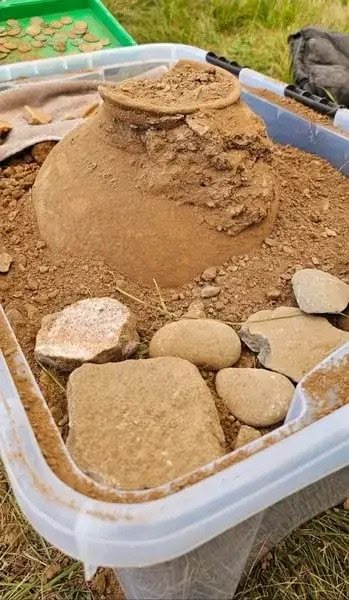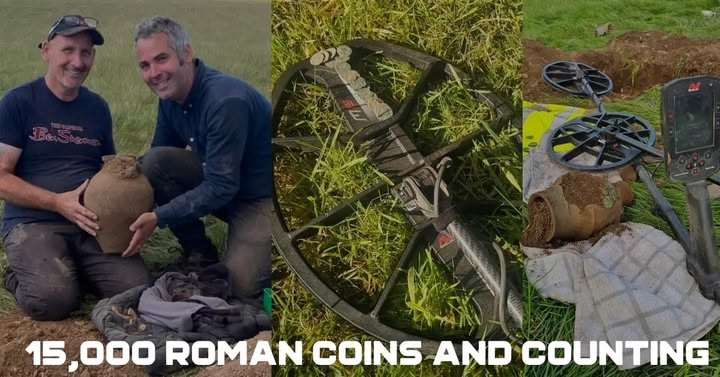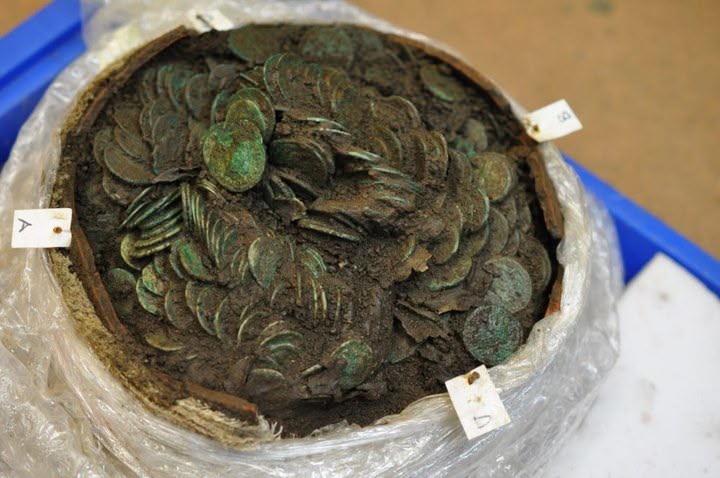Roman Hoard Found in North Wales
The two Roman coin hoards discovered by metal-detectorists in the Conwy Valley have been declared treasure by the Assistant Coroner for North Wales (East & Central), Kate Robertson.David Moss and Tom Taylor found the two hoards in Caerhun Community, Conwy, during the winter of 2018-2019.The larger hoard (Treasure Case 19.01) was found in a ceramic vessel which contained 2,733 coins, a mix of silver denarii minted between 32 BC and AD 235, as well as silver and copper-alloy radiates (also known as antoniniani) struck between AD 215 and 270.
The copper-alloy coins appear to have been put loosely in the pot, but most of the silver coins were held in two leather bags, which were placed at the very top of the hoard.The smaller hoard (Treasure Case 19.03) comprises 37 silver denarii, ranging in date from 32 BC to AD 221, which were found scattered across a small area in the immediate vicinity of the larger hoard.
Reduced to 60% of original (1004 x 668)

Remembering an episode of the TV programme Time Team, when they discovered the larger hoard, they carefully excavated the pot, before wrapping it in bandages and reporting both hoards to Dr Susie White, Finds Officer for the Portable Antiquities Scheme in Wales (PAS Cymru) based at Wrexham County Borough Museum & Archives.
Huge surprise
David Moss said: “We had only just started metal-detecting when we made these totally unexpected finds. On the day of discovery, just before Christmas 2018, it was raining heavily, so I took a look at Tom and made my way across the field towards him to tell him to call it a day on the detecting, when all of a sudden, I accidentally clipped a deep object making a signal. It came as a huge surprise when I dug down and eventually revealed the top of the vessel that held the coins.”“People do not realise the amount of work that goes on behind the scenes at the national museum, from excavating the coins, to looking after them and identifying them so they can be reported on as treasure……. it’s a huge process to be able to see the work unfold……to be involved at first hand as finders is an incredible experience.”
The hoards were then taken to Amgueddfa Cymru – Museum Wales for micro-excavation and identification.Louise Mumford (Senior Conservator of Archaeology at Amgueddfa Cymru) said: “In the conservation lab, investigation at the top of the pot quickly revealed that some of the coins had been in bags made from extremely thin leather, traces of which remained. It is very rare for organic materials such as this to survive in the soil.“The surviving fragments, which included two fragments of a stitched seam, were preserved and will provide information about the type of leather used and how the bags were made
https://uk.minelab.com/blog/post/minelab-manticore-uncovers-one-of-the-largest-roman-coin-hoards-ever-found-in-the-uk
61-69, M







